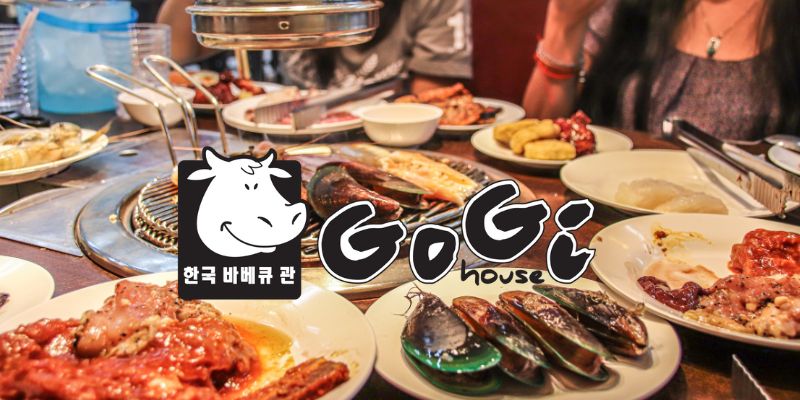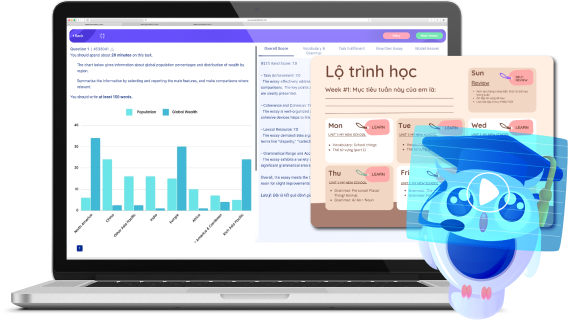Edmicro IELTS sẽ giúp bạn tổng hợp đầy đủ mẫu trả lời và lưu ý để đạt điểm tối đa cho 3 phần thi của bài Food IELTS Speaking!
Part 1 Food IELTS Speaking
Hãy cùng Edmicro tham khảo những câu hỏi thường gặp cho Part 1 của chủ đề Thực phẩm (Food), cũng như bộ câu trả lời mẫu các bạn nhé.
| Câu hỏi thường gặp | Mẫu câu trả lời |
|---|---|
| What is your favorite food? | My favorite food is sushi. I love the combination of fresh, raw fish, vinegared rice, and seaweed. |
| Do you like to cook? | Yes, I do enjoy cooking. I find it to be a creative and rewarding activity. |
| What are some traditional foods in your country? | My country, Vietnam, is a country with a rich culinary tradition. Some of the most popular traditional Vietnamese dishes include: phở, bánh mì, bún chả, v.v. |
| What are some healthy foods that you like to eat? | I’m a big fan of healthy eating and I like all the healthy ingredients such as fruits, vegetables, nuts. My most favorite healthy food is salad. |
Nếu giám khảo có hỏi lại, bạn cũng đừng quá lo sẽ mất điểm. Bởi đây chỉ là cách họ kiểm tra, đánh giá kỹ năng Paraphrase của bạn. Trong trường hợp này, thí sinh có thể sử dụng những mẫu câu như sau và nhắc lại ngắn gọn câu trả lời trước đó:
- Like I said before,…
- As I mentioned before, …
- As I explained previously, …
Part 2 Food IELTS Speaking
IELTS Speaking Part 2 yêu cầu thí sinh nói về một chủ đề cho sẵn trong vòng 2 phút. Hãy ghi nhớ 4 bước đơn giản này để hoàn thành Part 2 chủ đề Food.
- Bước 1: Ghi chép, lưu ý những từ khóa quan trọng.
- Bước 2: Lên dàn ý cho bài nói của mình, dàn ý cần trả lời cho từng câu hỏi của đề bài.
- Bước 3: Bắt đầu bài nói với phong thái tự tin, phát âm rõ ràng và nội dung trôi chảy.
- Bước 4: Kết thúc bài nói, tóm gọn lại các ý chính đã trình bày.
Bài thi sẽ có 1 câu hỏi chính và 3-4 câu hỏi phụ giúp trả lời câu hỏi chính. Trong 1 phút chuẩn bị, thí sinh sẽ được phát tờ đề bài, bút và giấy để lên ý tưởng, dàn ý cho bài nói.
Đề bài:
Describe a special meal you have had (Mô tả về một bữa ăn trong quá khứ của bạn)
- Where you had it? – Bạn ăn bữa ăn đó ở đâu?
- Who you had it with? – Bạn ăn cùng ai?
- What you ate? – Bữa ăn đó có những gì?
- And explain why it was special for you? – Giải thích vì sao bữa ăn đó đặc biệt với bạn
Bài mẫu 1
I love food and I have had many memorable meals throughout my life. However, the most special meal I have ever had was a Korean BBQ feast that I had with my friends at a restaurant called Gogi in San Francisco (1).
Gogi is a popular Korean BBQ restaurant that is known for its high-quality meats and authentic Korean flavors. I had heard reviews about the restaurant from my friends, so I was excited to try it out.
We started off with a variety of appetizers, including kimchi, dumplings, and japchae (2). The kimchi was spicy and flavorful, the dumplings were crispy and juicy, and the japchae was a delightful mix of sweet and savory flavors.
For the main course, we ordered a variety of meats, including bulgogi, pork belly, and kalbi (3). The meats were all marinated to perfection and cooked to order on a grill at our table. The bulgogi was tender and flavorful, the pork belly was crispy and fatty, and the kalbi was juicy and savory.
We also ordered a variety of side dishes, including rice, lettuce wraps, and dipping sauces (4). The rice was fluffy and flavorful, the lettuce wraps were the perfect way to wrap up the meats, and the dipping sauces added a delicious burst of flavor.
We all ate until we were completely stuffed and satisfied. The meal was amazing, and I couldn’t have asked for a better experience.
The reason I like this meal so much is because it was a special occasion with my friends (5). We laughed and talked for hours, and the food was just the icing on the cake. The meal was also very unique and memorable. The food is delicious, the service is excellent, and the atmosphere is fun and inviting.
Dịch:
Tôi rất yêu thích ẩm thực và đã có nhiều bữa ăn đáng nhớ trong suốt cuộc đời mình. Tuy nhiên, bữa ăn đặc biệt nhất mà tôi từng có là một bữa tiệc nướng Hàn Quốc cùng bạn bè tại nhà hàng Gogi ở San Francisco (1).
Gogi là một nhà hàng BBQ Hàn Quốc nổi tiếng với các loại thịt chất lượng cao và hương vị đậm chất truyền thống. Tôi đã nghe bạn bè khen ngợi về nhà hàng này, nên vô cùng háo hức được trải nghiệm.
Chúng tôi bắt đầu với nhiều món khai vị, bao gồm kimchi, há cảo và japchae (miến xào Hàn Quốc) (2). Kimchi cay và đậm đà hương vị, há cảo giòn rụm và mọng nước, còn japchae lại là sự kết hợp hài hòa giữa vị ngọt và mặn vô cùng hấp dẫn.
Đến món chính, chúng tôi gọi nhiều loại thịt khác nhau như bulgogi (thịt bò ướp), samgyeopsal (ba chỉ nướng) và kalbi (sườn bò nướng) (3). Tất cả đều được ướp rất vừa vặn và nướng ngay tại bàn. Bulgogi mềm thơm, ba chỉ giòn béo, còn kalbi thì mọng nước và đậm đà.
Chúng tôi cũng gọi thêm nhiều món ăn kèm như cơm, rau xà lách cuốn và các loại nước sốt chấm (4). Cơm dẻo thơm, rau xà lách tươi ngon giúp cuốn thịt thêm trọn vị, còn nước sốt thì làm hương vị bùng nổ hơn.
Cả nhóm ăn uống no nê và vô cùng thỏa mãn. Bữa ăn thật sự tuyệt vời, và tôi không thể mong chờ một trải nghiệm nào tốt hơn.
Lý do tôi thích bữa ăn này đến vậy là vì đó là một dịp đặc biệt bên bạn bè (5). Chúng tôi đã cùng nhau cười nói hàng giờ, và đồ ăn ngon chính là “lớp kem trên chiếc bánh”. Đây là một bữa ăn độc đáo và khó quên, với hương vị tuyệt hảo, dịch vụ chu đáo và bầu không khí vui vẻ, ấm cúng.
GHI CHÚ
- Các câu (1), (2), (3), (4), (5) là câu ghi điểm và trả lời đúng trọng tâm câu hỏi.
- Các câu sau đó là để bổ sung ý, thông tin, điều này khiến bài nói của thí sinh sâu sắc hơn và tạo cơ hội nâng band điểm.
- Bài này dùng thì quá khứ khi mô tả về bữa ăn.

Bài mẫu 2
One of the most memorable meals I have ever had was a family reunion dinner during the Lunar New Year last year. In my country, Tet is the most important traditional holiday, and having meals together during this time is a meaningful way for family members to bond.
I had this meal at my grandparents’ house, where all of my relatives gathered to celebrate. The dining table was filled with a wide variety of traditional Vietnamese dishes. For example, there was bánh chưng (square sticky rice cake), boiled chicken, pickled vegetables, spring rolls, and a hot pot in the center of the table. Each dish had its own special flavor, but together they created a feast that was both delicious and symbolic.
What made this meal truly special was not only the food but also the atmosphere. Everyone was cheerful and excited, sharing stories about the past year and expressing wishes for health and success in the new year. I still remember the warmth and laughter filling the room as we enjoyed the meal.
Personally, I felt incredibly grateful and happy because this kind of family gathering doesn’t happen very often, especially as people get busier with their own lives. The food itself was wonderful, but the sense of togetherness and love was what made it unforgettable.
To sum up, that Lunar New Year family dinner was the most special meal I have ever had. It was meaningful not only for the variety of traditional dishes but also for the chance to connect with loved ones and create lasting memories.
Dịch:
Một trong những bữa ăn đáng nhớ nhất mà tôi từng có là bữa cơm đoàn tụ gia đình vào dịp Tết Nguyên Đán năm ngoái. Ở đất nước tôi, Tết là ngày lễ truyền thống quan trọng nhất, và những bữa cơm sum họp trong dịp này mang ý nghĩa gắn kết các thành viên trong gia đình.
Tôi đã có bữa ăn này tại nhà ông bà, nơi tất cả họ hàng cùng quây quần để chúc Tết. Trên bàn ăn có rất nhiều món truyền thống của Việt Nam như bánh chưng, gà luộc, dưa muối, nem rán và một nồi lẩu đặt ở giữa. Mỗi món ăn đều có hương vị riêng, nhưng khi kết hợp lại thì tạo nên một bữa tiệc vừa ngon miệng vừa mang tính biểu tượng.
Điều khiến bữa ăn này đặc biệt không chỉ là đồ ăn mà còn là bầu không khí. Mọi người đều vui vẻ, hứng khởi, kể cho nhau nghe những câu chuyện của năm cũ và gửi gắm lời chúc cho năm mới. Tôi vẫn nhớ sự ấm áp, tiếng cười tràn ngập căn phòng khi cả nhà cùng thưởng thức bữa cơm.
Cá nhân tôi cảm thấy vô cùng biết ơn và hạnh phúc, bởi những buổi đoàn tụ như vậy không phải lúc nào cũng có, nhất là khi mỗi người đều bận rộn với cuộc sống riêng. Đồ ăn thì tuyệt vời, nhưng chính cảm giác sum vầy và yêu thương mới làm nó trở nên khó quên.
Tóm lại, bữa cơm Tết Nguyên Đán năm đó là bữa ăn đặc biệt nhất mà tôi từng có. Nó không chỉ ý nghĩa bởi sự đa dạng món ăn truyền thống mà còn vì cơ hội kết nối với gia đình và lưu giữ những kỷ niệm đẹp.
Part 3 Food IELTS Speaking
Cách trả lời câu hỏi part 3 Food IELTS Speaking có một số điểm tương đồng với part 1, giám khảo hỏi, thí sinh trả lời. Tuy nhiên, Part 1 chỉ yêu cầu trả lời những câu hỏi ngắn gọn, đời thường. Part 3, ngược lại, là những câu hỏi mang tính học thuật hơn, cần có đầy đủ ý chính và các luận điểm, luận cứ đi kèm hỗ trợ.
Cùng Edmicro tham khảo một số câu hỏi IELTS Speaking thường gặp về chủ đề đồ ăn của Part 3:
- What are the benefits of eating a healthy diet?
- What are the challenges of eating a healthy diet?
- What are some tips for eating a healthy diet?
- What are the differences between the way young and old people think about new food?
- What nation’s identity can be seen in their cuisine?
What are the benefits of eating a healthy diet?
Bài mẫu:
There are several benefits to eating a balanced diet that enhance our general well-being. We may prevent many health issues, improve our physical and mental state, and increase our energy levels by eating nutritious foods.
Physical benefits, such as weight management, can be maintained through a balanced diet rich in fruits, vegetables, and whole grains. Moreover, healthy foods help lower blood pressure and cholesterol levels, reducing the risk of heart disease and stroke.
Mental benefits, for example, a healthy diet provides the body with the necessary nutrients to cope with stress and anxiety. They can also help regulate sleep patterns and improve overall sleep quality.

Dịch:
Có nhiều lợi ích khi duy trì một chế độ ăn uống cân bằng, góp phần nâng cao sức khỏe tổng thể của chúng ta. Bằng cách ăn thực phẩm giàu dinh dưỡng, chúng ta có thể phòng tránh nhiều vấn đề sức khỏe, cải thiện cả thể chất lẫn tinh thần, đồng thời tăng cường mức năng lượng.
Về mặt thể chất, chế độ ăn cân bằng giàu trái cây, rau củ và ngũ cốc nguyên hạt giúp kiểm soát cân nặng hiệu quả. Bên cạnh đó, thực phẩm lành mạnh còn hỗ trợ giảm huyết áp và cholesterol, từ đó giảm nguy cơ mắc bệnh tim mạch và đột quỵ.
Về mặt tinh thần, một chế độ ăn uống lành mạnh cung cấp cho cơ thể các dưỡng chất cần thiết để đối phó với căng thẳng và lo âu. Ngoài ra, nó còn giúp điều hòa nhịp sinh học, cải thiện chất lượng giấc ngủ tổng thể.
What are the challenges of eating a healthy diet?
Bài mẫu:
Eating a healthy diet can be challenging for various reasons.
Firstly, processed foods and sugary drinks are often cheaper and more convenient than healthy options, making it tempting to opt for unhealthy choices when time or resources are limited.
Secondly, it can be difficult to adopt a healthy diet if you have strong preferences for unhealthy foods. Developing a taste for healthy alternatives requires time, effort, and willingness to experiment with new flavors and textures.
Thirdly, social norms and eating habits can make it challenging to maintain a healthy diet. For instance, if you often eat out with friends or family who prefer unhealthy choices, it can be difficult to stick to your own healthy goals.
Finally, in some areas, access to fresh, affordable, and healthy food options may be limited. This can make it challenging to maintain a healthy diet, especially for individuals with lower incomes.

Dịch:
Việc duy trì một chế độ ăn uống lành mạnh có thể gặp nhiều khó khăn vì nhiều lý do khác nhau.
Thứ nhất, thực phẩm chế biến sẵn và đồ uống có đường thường rẻ hơn và tiện lợi hơn so với các lựa chọn lành mạnh. Điều này khiến nhiều người dễ bị cám dỗ chọn thực phẩm không tốt cho sức khỏe khi thời gian hoặc nguồn lực bị hạn chế.
Thứ hai, việc xây dựng chế độ ăn lành mạnh có thể khó khăn nếu bạn vốn có sở thích mạnh mẽ với những món ăn không lành mạnh. Để làm quen với các lựa chọn thay thế tốt cho sức khỏe, bạn cần có thời gian, nỗ lực và sự sẵn sàng thử nghiệm những hương vị cũng như kết cấu mới.
Thứ ba, các chuẩn mực xã hội và thói quen ăn uống cũng có thể cản trở việc duy trì chế độ ăn uống lành mạnh. Ví dụ, nếu bạn thường xuyên ăn ngoài với bạn bè hoặc gia đình – những người ưa thích đồ ăn không tốt cho sức khỏe – thì sẽ rất khó để bạn kiên trì với mục tiêu ăn uống lành mạnh của riêng mình.
Cuối cùng, ở một số khu vực, khả năng tiếp cận thực phẩm tươi, giá cả hợp lý và tốt cho sức khỏe còn hạn chế. Điều này khiến việc duy trì chế độ ăn lành mạnh trở nên khó khăn, đặc biệt đối với những người có thu nhập thấp.
What are some tips for eating a healthy diet?
Bài mẫu:
I would recommend 4 tips for eating a healthy diet.
The first tip is to base your diet on plenty of fruits, vegetables, and whole grains. These foods are packed with nutrients that are essential for good health, including vitamins, minerals, fiber, and antioxidants.
Second is to limit added sugar and salt. Too much added sugar can contribute to weight gain, obesity, and type 2 diabetes. Too much salt can raise your blood pressure, which is a risk factor for heart disease and stroke.
Third is to drink plenty of water. Water is essential for many bodily functions, including regulating body temperature, transporting nutrients, and removing waste products.
Finally, you should cook more meals at home. This gives you more control over the ingredients you use and the portion sizes you eat.

Dịch:
Tôi muốn gợi ý 4 mẹo để duy trì một chế độ ăn uống lành mạnh.
Mẹo đầu tiên là xây dựng chế độ ăn dựa trên nhiều trái cây, rau củ và ngũ cốc nguyên hạt. Những thực phẩm này chứa nhiều dưỡng chất thiết yếu cho sức khỏe, bao gồm vitamin, khoáng chất, chất xơ và chất chống oxy hóa.
Thứ hai là hạn chế đường và muối bổ sung. Quá nhiều đường có thể dẫn đến tăng cân, béo phì và tiểu đường tuýp 2. Trong khi đó, việc tiêu thụ quá nhiều muối có thể làm tăng huyết áp – một yếu tố nguy cơ gây bệnh tim mạch và đột quỵ.
Thứ ba là uống nhiều nước. Nước rất cần thiết cho nhiều chức năng của cơ thể, bao gồm điều hòa thân nhiệt, vận chuyển chất dinh dưỡng và loại bỏ các chất thải.
Cuối cùng, bạn nên tự nấu ăn ở nhà nhiều hơn. Điều này giúp bạn kiểm soát tốt hơn các nguyên liệu sử dụng cũng như khẩu phần ăn của mình.
What are the differences between the way young and old people think about new food?
Bài mẫu:
There are several notable differences between the way young and old people think about new food.
Generally, younger people tend to be more open to trying new and unfamiliar foods. They are often more adventurous and curious about different cuisines and flavors. On the other hand, elderly may be more hesitant to try new foods, especially those that differ significantly from their familiar cuisine.
Additionally, younger people often approach food with a sense of experimentation and playfulness. They are more likely to try new combinations and flavors, even if they are unsure of the outcome.
Finally, the younger generations are often more exposed to diverse cultures and culinary traditions through travel, social media, and interactions with people from different backgrounds.
To sump up, the way young and old people think about new food is influenced by a combination of factors, including openness to experimentation and cultural influences.

Dịch:
Có một số điểm khác biệt đáng chú ý giữa cách người trẻ và người lớn tuổi nhìn nhận về món ăn mới.
Thông thường, người trẻ thường cởi mở hơn trong việc thử những món ăn lạ và chưa quen thuộc. Họ thường có tinh thần phiêu lưu và tò mò về các nền ẩm thực cũng như hương vị khác nhau. Ngược lại, người lớn tuổi có xu hướng thận trọng hơn khi thử món mới, đặc biệt là những món khác biệt quá nhiều so với ẩm thực quen thuộc của họ.
Bên cạnh đó, người trẻ thường tiếp cận việc ăn uống với tinh thần thử nghiệm và vui thích. Họ sẵn sàng thử những sự kết hợp và hương vị mới, ngay cả khi chưa chắc chắn về kết quả.
Cuối cùng, thế hệ trẻ ngày nay thường có nhiều cơ hội tiếp xúc với các nền văn hóa và truyền thống ẩm thực đa dạng thông qua du lịch, mạng xã hội, và giao lưu với những người đến từ nhiều bối cảnh khác nhau.
Tóm lại, cách mà người trẻ và người lớn tuổi nhìn nhận món ăn mới bị chi phối bởi nhiều yếu tố, bao gồm sự cởi mở trong việc thử nghiệm và ảnh hưởng văn hóa.
What nation’s identity can be seen in their cuisine?
Bài mẫu:
Many nations’ identities are deeply intertwined with their cuisine, reflecting their history, culture, geography, and natural resources. Two examples highlight the profound connection between a nation’s identity and its cuisine are Indian and French cuisine.
Indian cuisine is incredibly diverse, with regional variations influenced by local ingredients, cultures, and religious traditions.
The use of spices, herbs, and aromatics is a hallmark of Indian cuisine, creating a symphony of flavors in dishes like curries, biryanis, and tandoori specialties. Indian cuisine reflects the country’s cultural diversity, its rich history, and it’s deep connection to spirituality.
In short, cuisine serves as a tangible expression of a country’s culture, history, and values, providing a window into the soul of a nation.

Dịch:
Bản sắc của nhiều quốc gia gắn liền chặt chẽ với ẩm thực của họ, phản ánh lịch sử, văn hóa, địa lý và tài nguyên thiên nhiên. Hai ví dụ tiêu biểu cho mối liên hệ sâu sắc giữa bản sắc dân tộc và ẩm thực là ẩm thực Ấn Độ và ẩm thực Pháp.
Ẩm thực Ấn Độ vô cùng đa dạng, với sự khác biệt theo vùng miền chịu ảnh hưởng từ nguyên liệu địa phương, văn hóa và truyền thống tôn giáo.
Việc sử dụng gia vị, thảo mộc và hương liệu là đặc trưng nổi bật của ẩm thực Ấn Độ, tạo nên bản hòa âm hương vị trong các món ăn như cà ri, biryani và các món nướng tandoori. Ẩm thực Ấn Độ phản ánh sự đa dạng văn hóa, bề dày lịch sử cũng như mối gắn kết sâu sắc với tâm linh của đất nước này.
Tóm lại, ẩm thực chính là sự thể hiện rõ ràng của văn hóa, lịch sử và giá trị quốc gia, đồng thời mở ra cánh cửa bước vào tâm hồn của một dân tộc.
Xem thêm: Đề thi IELTS Speaking 2023 Tổng Hợp Theo Ba Phần
Tham khảo từ vựng về Food IELTS Speaking
| Từ vựng | Nghĩa |
|---|---|
| Sweet | ngọt |
| Salty | mặn |
| Sour | chua |
| Mout-watering | chảy nước miếng |
| Luscious | sang trọng |
| Heavenly | cực ngon |
| Fulfilling | thỏa mãn |
| Flavorful | đậm đà |
| Chunky | cắt miếng to |
| Buttery | có vị bơ, béo ngậy |
| Smooth | mịn |
| Creamy | béo ngậy |
| Sticky | dính |
| Chewy | dai |
| Crunchy/Crispy | giòn |
| Spicy | cay |
| Umami | có vị tanh, thịt |
| Bitter | đắng |
| Từ vựng | Nghĩa |
|---|---|
| Texture | kết cấu |
| Cuisine | ẩm thực |
| Cooking method | cách chế biến, phương pháp nấu |
| Recipe | công thức |
| Ingredient | nguyên liệu |
| Spice | gia vị cay, nặng |
| Seasoning | gia vị |
| Beverage | đồ uống |
| Snack | đồ ăn vặt |
| Dessert | tráng miệng |
| Side dish | đồ ăn kèm |
| Main course | món chính |
| Appetizer | món khai vị |
| Culinary | nghệ thuật ẩm thực |
Động từ
| Từ vựng | Nghĩa |
|---|---|
| Binge | ăn cực nhiều, mất kiểm soát |
| Devour | ngấu nghiến |
| Nibble | nhấm nháp, ăn miếng nhỏ |
| Savor | tận hưởng hương vị |
| Cook | nấu nướng, chế biến |
| Slice | thái lát |
| Peel | bóc vỏ |
| Dice | thái hạt lựu |
| Blend | xay |
| Gulp | uống ừng ực |
| Sip | nhấp môi |
| Slurp | húp |
| Stew | hầm |
| Stir-fry | xào |
Lưu ý trong bài thi IELTS Speaking
- Tìm hiểu kỹ cấu trúc bài thi IELTS Speaking. Mỗi phần có những yêu cầu và tiêu chí đánh giá riêng. Bạn cần nắm rõ cấu trúc bài thi để có sự chuẩn bị tốt nhất.
- Tập luyện thường xuyên. Cách tốt nhất để cải thiện khả năng nói tiếng Anh là tập luyện thường xuyên.
- Chuẩn bị từ vựng và ngữ pháp. Bạn cần tích lũy một lượng từ vựng phong phú và nắm vững các cấu trúc ngữ pháp cơ bản.
- Giữ bình tĩnh và tự tin. Tâm lý thoải mái và tự tin là yếu tố quan trọng giúp bạn đạt điểm cao trong bài thi IELTS Speaking.
Việc luyện tập thường xuyên đề thi IELTS Speaking sẽ giúp bạn thêm tự tin, rèn luyện kỹ năng nói và phản xạ trước câu hỏi. Edmicro IELTS chúc bạn đạt được kết quả mong muốn trong kỳ thi IELTS!
LUYỆN TẬP THÊM TẠI:














